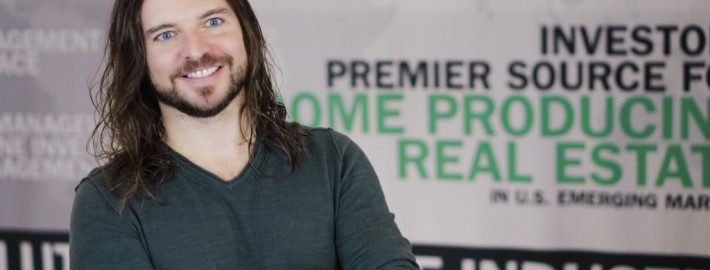Property Value: The Capitalization Approach
By Dan Harkey
When arranging a loan or investing in real estate, understanding the use of capitalization approach (“Cap Rates”) is critical to the decision-making. This subject is important to commercial realtors, lenders, developers, and investors.
Definition of Capitalization Rate (Cap Rate)
Cap Rates represent the ratio of Net Operating Income (“NOI”) to the property asset value (NOI / Value = Cap Rate). The income capitalization approach does not consider whether the property is free and clear with no debt service. NOI is simply gross rents, less a vacancy allowance, less operating expenses. If you have similar properties with similar characteristics in a similar geographical location that have recently sold in arm’s length cash transactions, you can calculate the comparison cap rates. Also, cap rates may vary, even in the same geographic location, depending upon the multiple types of properties. Examples are, Class A vs Class C office, industrial, apartments, new modern styles with amenities vs older dated properties. Additionally, the strength of the tenancy from national credit tenants with long term leases, vs a mom and pops’ month to month tenancy would result in a different cap rate. Most likely the mom and pop tenancy would reflect a higher cap rate. An exception would be where the national credit tenant locks a lease/rental rate that does not increase as the market dictates or anticipates, reflecting what is referred to as below market rent. The mom and pop, on the other hand, could be converted to a market lease relatively quickly, by either acquiring a new tenant or by renegotiating the lease with a higher rent
Market rents should be used rather than actual rents. In most cases, actual rents are lower. When there is a lease up period, such as with new construction of an income producing property, future cash flows need to be estimated to the point of income stabilization, then the future stabilized income is discounted, utilizing an estimate of a capitalization rate, and a discount rate. Work with a good appraiser on this?

Once the market Cap Rate has been determined, you can apply it to the NOI and cap rate analysis of the property under consideration to indicate the probable market value.
At this point, I want to credit competent commercial appraisers, who can assist us to find the correct Cap Rate. I would not try to do it myself, without the assistance of an appraiser with local experience.
Let’s say for example that: The market Cap Rate for a commercial property with triple net leases (“NNN”) has been determined to be 6.5%. The 10,000 square foot multi-tenant property under consideration generates monthly rents of $1.50 per foot. After applying a 10% vacancy collection and loss factor and expenses of 5% for management and reserves, the NOI is $153,900.
10,000 sf X $1.50 = $5,000 Per mo. X 12 Mos. = $180,000 gross income
$180,000 – $18,000 10% vac. = $162,000 – $8,100 5% exp. = $153,900 NOI
$153,900 NOI / .065 Cap Rate = $2,367,692 asset value
From an investment standpoint Cap Rates can also indicate a prevailing rate of return before debt service and can help a lender/investor to measure both return on invested capital and profitability based on cash flow. An informed lender/ investor should understand that there may be dramatic variations in a property’s value when unsupported or unrealistic Cap Rates are applied.
Why do we use Cap Rates?

The capitalization approach is used as a “comparative method” of valuing property based on similar geographic locations, similar properties, and similar risks that would yield a comparable rate of return. Once the value is established, the loan to value ratio can be calculated to determine if it falls within loan underwriting guidelines.
Of course, Cap Rates are only one metric. They represent a snapshot of the market at the time of investment and they do not take debt service or financing costs into consideration. Therefore, if a borrower is going to finance his investment, as most people do, then further analysis such as cash on cash return would be useful. Sophisticated loan underwriters and investors will also do an Internal Rate of Return calculation. These calculations assist in establishing that the collateral property is not only income producing but a worthwhile investment.
Cash on Cash Return

Cash on cash return is a quick analysis that can be done to determine the yield on an initial investment. It is developed by dividing the total cash invested (the down payment plus initial cost), or the net equity into the annual pre-tax net cash flow.
Assume the borrower purchased the property which costs $1,200,000 and provides an NOI of $100,000, with a $400,000 down payment representing the equity investment in the project. The cash on cash return for this property would be:
$100,000 / $400,000 = 25%
If the borrower were to purchase the property for all cash, his cash on cash return would be:
$100,000 / $1,200,000 = 8%
It is clear from this formula that leveraging or financing real estate transactions will yield a higher cash on cash return, provided the transaction is financed at a favorable interest rate.
Internal Rate of Return
The internal rate of return (“IRR”) refers to the yield that is earned or expected to be earned for a given capital investment over the period of ownership. The IRR for an investment is the yield rate that equates the present value of the future benefits of the investment to the amount of capital invested. The IRR applies to all expected benefits, including monthly and yearly cash flow and the proceeds from resale at the termination of the investment. It can be used to measure the return on any capital investment, before or after income taxes. Ideally, the IRR should exceed the cost of capital.

Is there an ideal Cap Rate?
Each growth/investor should determine their own risk tolerance that will reflect the ideal for their portfolio. A lower Cap Rate means a higher property value. A lower Cap Rate would mean that the underlying property is more valuable but that it may take longer to recapture the investment. Whichever Cap Rate is targeted will represent the annual return overtime (before financing costs and taxes) an investor can expect to make on the investment at the time the property is acquired. If investing for the long term one might select properties with lower Cap Rates. If investing for cash flow, look for a property with a higher Cap Rate. It’s valuable to look at historical Cap Rates and Cap Rate trends on the specific property type in a specific geographical location. Declining Cap Rates may mean that the market for your property type is heating up. A Cap Rate that is either at the top of the range or at the lower end of the range is likely to change and it may be wise to adjust the analysis and/or investment strategy accordingly. And make certain, when comparing Cap Rates, to compare the same geographical locations and property types, apartments to apartments. For Cap Rates to remain constant on any given investment, the rate of asset appreciation and the increase of NOI it produces will occur in tandem and at the same rate.
Below are examples of the affect changes in NOI and/or Cap Rates on asset values:
As NOI increases and Cap Rates remain the same, asset value increases.
NOI CAP RATE ASSET VALUE
$300,000 / .06 = $5,000,000
$350,000 / .06 = $5,833,000
$400,000 / .06 = $6,666,666
$450,000 / .06 = $7,500,000
The effect on Asset Value when the Cap Rate varies.
NOI CAP RATE ASSET VALUE
$500,000 / .03 = $10,000,000
$500,000 / .04 = $ 8,333,333
$500,000 / .05 = $ 7,142,857
$500,000 / .06 = $ 6,250,000
Cap rates are driven by property type, geographic location and market sentiment. During the recent recession, as property values fell, Cap Rates increased dramatically for some property types in certain areas of the country. The improving economy has reversed that trend.

Correlation Between Cap Rates and US Treasuries
The US Ten Year Treasury Note (“UST”) is deemed to be the risk-free investment against which returns on other types of investments can be measured. Interest rates on UST have been on a broad decline for many years but have recently began to rise. There is now concern that as interest rates begin to rise, so will Cap Rates will rise and consequently there may be reduction in asset values over time? With so many uncertainties in the market, and growth projections constantly being revised, the spread between UST and Cap Rates have not remained constant.
Also, the discussion of the above, affect of cap rates resulting from artificially low interest rates, inflationary expectations, and anticipated increased interest rates need to be discussed in another article.
Summary
Cap Rates are a good starting point in analyzing a property’s value, but they should not be the only analysis. It is prudent to look at the cash on cash return and the internal rate of return as well. Factors such as changes in NOI, vacancy rates, and changes in neighborhood property values are just a few other considerations. Also recognize, that Cap Rates may vary widely in different geographic areas. Property appreciation, perhaps one of the greatest reasons for investing in real estate, is not part of the Cap Rate calculation. For investors, the tax benefits of owning commercial real estate may, in and of themselves, be the driving force to make such an investment. If the property is to be leveraged, then there may be write-offs for loan fees, interest expense, depreciation and investment expenses. Taking all these factors into account can help achieve the basis for making a sound business decision.

As interest rates go up, will this automatically cause Cap Rates to rise, and values to go down. Not necessarily in the short term. Remember that increased debt service based upon higher interest rates is not considered in the capitalization approach. But, over time as interest rates go up, borrowers will feel the sting of higher debt service payments. Some property transactions may become less appealing financially. As purchasers and borrowers elect not to purchase, that may compound and create more unsold inventory. Some sellers may get desperate and reduce price to sell quicker. The lowered price would result in an increased cap rate. On a macro level, this could result in lowering all real estate prices.
How dramatic can lowered real estate prices be over time? As we witnessed 10 years ago that the contagion effect could spread and result in dramatically lower values, and substantially increased Capitalizations Rates.
Dan Harkey is a business and private money financial consultant. I have been active in the real estate and financial services industry since 1972. I have taught courses on private money lending and underwriting of commercial/industrial properties at over 350 educational seminars. This and many other articles I have written are available to read on my website Danharkey.com
You may also reach me at my office (949) 521-7115 or by e-mail at [email protected] you can also find me LinkedIn.

Dan J. Harkey
Business and Private Money Lending Consultant
Mobile: 949.533.8315
Office: 949.512.7115
The article is for educational purposes only and is not intended as a solicitation





























































